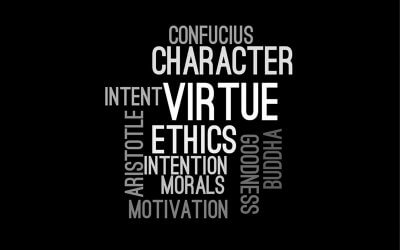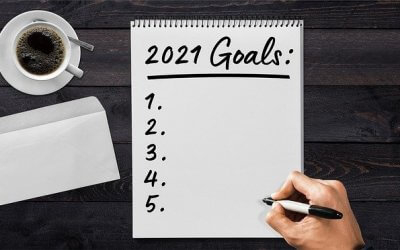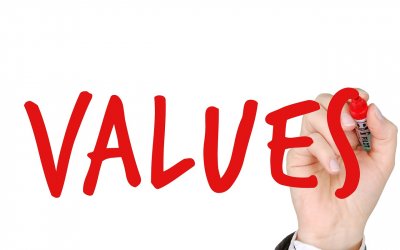An old colleague of mine recently posted on Facebook, “Life/business will not return to normal until we can get stuff done face to face.” While there is some truth to that, if we are going to live in our COVID world for another year, companies cannot wait for getting stuff done face to face, they need to sell now!
But selling during COVID is different, as a client recently said, “I am not sure our sales force have the skills or know-how to sell online.” Sales teams face two challenges selling during COVID, reduced budgets in an uncertain market, and selling when business is virtual. Already half of the B2B companies have reduced their budgets by over 40%. Overall, IT spend is predicted to drop 8% in 2020 – as enterprises spend roughly $300B less than they did in 2019.
A further complication for B2B companies selling internationally. How do U.S. companies sell in Europe where they are barred from traveling, while their European competitors can move around freely? This will pose problems and could result in a loss of market share unless companies develop new tactics to counter the lack of face to face interaction.
Andreesen Horwitz recently said that from their discussions with several CROs and founders they were seeing:
- Cash is critical. Total Contract Values are lower, and there is a 30% drop in upfront cash, as actual payments are delayed or deferred.
- Significant drops in the sales pipeline. Hardest hit are those with companies have sales-led prospecting and have direct multi-stage sales + implementation.
- Increased involvement of execs, e.g., CFOs, in deals and procurement process
- Channel is more critical. The proportion of deals coming from channel and renewal rates relative to bookings are both up.
Andreesen Horwitz provided six strategies for selling during COVID.
- Build pipeline through targeted virtual events. With everyone WFH and easier to schedule, including executives, figure out how to leverage your C-suite effectively. Don’t just rely on webinars with large numbers of attendees featuring execs, but use smaller events focused on specific topics of interest where you can get your CEO or CTO in front of essential buyers. The loss in quantity will be exceeded by what you gain in quality and higher intent. However, as much of this new, the pipeline from virtual events may progress differently from a traditional pipeline. Thus it is critical to understand and monitor the conversion rates of your virtual event funnel.
- Get creative with your Business Development Representatives (“BDR”). If customers can self-serve initially, that will provide marketing qualified leads for BDRs to follow up on. However, to enable customers to self serve, you need to ensure that your website correctly explains and sells your product. If you have insufficient warm leads for your BDRs, consider switching BDRs to customer success managers (CSMs) focusing on adoption, retention, and renewal, since the two talent pools often overlap. Especially in a SaaS business, where the CSM is essential because customer success drives adoption, and adoption reduces churn and drives up renewal rates. Many SaaS companies used this tactic during the 2008-9 recession, and it often helps BDRs better understand customers.
- To renew customers, be flexible on all levers, except the price. It’s always easier to retain a customer and renew, or even expand, an existing account than to acquire a new customer, especially during a downturn. Extending flexibility to customers, when you can, will win customer loyalty and referrals in the long-term, assuming you can deliver successfully. Your current prices will determine your future prices, determining your total addressable market (TAM), so any reduction now has long term effects. Further, once you start negotiating on price, you have become a commodity. When renegotiating or changing contract terms, if possible, look to levers beyond price, such as flexible payment terms or additional professional services.
- Implement a deal desk. If a salesperson gives something away to close a deal, that incentive can quickly become the new standard for all sales. Implement a deal desk, usually in the form of a mailing list or a chain of sign-off for deals over a certain threshold, to maintain deal structure around incentives and discounts. A deal desk will prevent reps from giving away too much.
- Manage the psychology of your salespeople, as well as your quotas. Set expectations that are achievable and realistic, not only because people need to get paid, but because great salespeople need to win. For great salespeople, much like for a top athlete or prizefighter, confidence is a big part of their game. The way they get confidence is they win and have the attitude, “I never miss a number. I usually blow it out. I never lose to a competitor.” Sales numbers feed that psychology, so what if you maintain your sales numbers based on life before COVID, and now, your top salespeople are not getting paid and are losing confidence. Eventually, their psychology will get to the point where they start making silly mistakes. “They don’t listen carefully.” “They’re not patient.” “They press too hard.” You need to support your sales team in keeping their confidence high, and that starts with a reasonable plan and then having an understanding of what’s going on in these cycles.
- Look for channel partners with strong customer relationships and pull from the field. Partners who don’t have to do prospecting but can pull you into existing relationships are the better partners right now. You have to shift your channel strategy from scrappier, more boutique channel partners to more established players who have the relationship and account control. Behavior follows business, so look for the pull from the field sales team to evaluate a partnership and know that it is strategic. Once you see that pull from the field, you can match up your sellers with their sellers, identify the accounts they’re in that want your functionality, and then do the integration that the salespeople want.
Of course, this is just the start. Other questions:
- What metrics should you watch right now?
- How do you qualify leads?
- How do you evaluate the risk v. opportunity of channel partners?
See this Andreesen Horwitz article for a discussion on many of these questions.
Recent Posts
The “Flaw of Averages” Causes Havoc for Businesses
Discover how understanding the limitations of averages and embracing probabilistic thinking can improve decision-making and risk management in business.
What is Your Strategy, In a Sentence?
If you are banking on the vaccine returning us all to “normal” quite quickly, in the famous words of Dr. Akande, “Hope is not a strategy.” Your organization should be preparing a well-defined strategy for 2021 and beyond. Once you have this strategy, the ultimate question: can you clearly articulate it in one sentence? Distilling your strategy into a single sentence is a powerful tool, both for your legacy and your team effectiveness. Not sure where to start? I offer a plug-in formula to set up your strategy sentence.
Character Matters
“It’s easier to hold to your principles 100% of the time than it is to hold to them 98% of the time.” — Clayton Christiansen. I have often written about the importance of a company’s Core Values. That’s because no matter what words you may have chosen as values, your organization’s Core Values are on display in how leadership and employees actually behave. As I’ve said before, how you have acted in the last twelve months will define your career for the next decade. Your character, and your company’s character, matters.
New Year’s Resolutions, Once More Unto the Breach
The holidays have been even quieter than normal, which has given me plenty of time to reflect on my New Year’s resolutions. Looking at 2021, I decided to use a completely new approach to lay out my goals. The result of my new approach? A highly-detailed, accountable, actually achievable plan for the next year (I think). Wondering what this process looks like?
To Vaccinate or Not to Vaccinate, that is the Question
What do your employees, peers, and leadership team think of the COVID-19 vaccine? Will you require the vaccine, or will you let employees make individual decisions? As a leader, you need to steer the discussion about vaccines in your organization with your Core Values in mind. No matter what strategy your organization takes, the most important factor is going to be how you communicate your decision.
3 Ways You Could be Undermining Your Core Values
Can you answer “Why does your organization exist? What are your core values?” Great. Now, would your latest entry-level employee give a similar answer? How about someone who has been at your company for a year? Your core values give your organization a guiding mission. Many organizations pay this idea lip service, but their true commitment to their core values was tested this year. As we close out 2020, there’s no better time to examine how your organization is approaching your core values.
Are You Prepared for 2021 With Enough Cash?
Companies don’t go bankrupt because they lose money; rather, they run out of cash. Where are we, heading into 2021? First, you can expect your cash to get tighter as we weather the current economic slowdown. Then, with a vaccine on the horizon, you will need to be positioned for growth. If you don’t have the cash you need, have you looked at how you can generate the cash internally? More on how to improve your cash conversion cycle…
Tony Hsieh, a Corporate Culture Icon, RIP
In his work as Zappos CEO and elsewhere, Tony Hsieh believed, and proved, that culture is the most important thing in an organization. According to Hsieh, if you get the culture right, the rest will take of itself. How did Zappos do it? You can take a look at everything from the company’s interview questions, to “The Offer” to leave a position as a new hire. Hsieh believed that a company’s brand is just a reflection of the culture, and his legacy is felt across so many industries.
CEO, Try Thy Hiring System
How does your company hire? I’ve seen the good, the bad, and the surprisingly ugly hiring processes in my career. From the HR email mix-ups to the interviewer watching the World Series while I responded to his questions, I’ve learned that you can tell a lot about an organization simply by examining the hiring experience. Are you chasing away the kind of people you need at your company?
What is Leadership?
What is it, exactly, that great leaders do? There are plenty of overused adages about “leadership” in business. It’s worth examining the tropes around leadership, plus the traits of the leaders who actually leave a mark. Great leaders are forged through adversity, and they leave a legacy. What does that look like in your organization?











